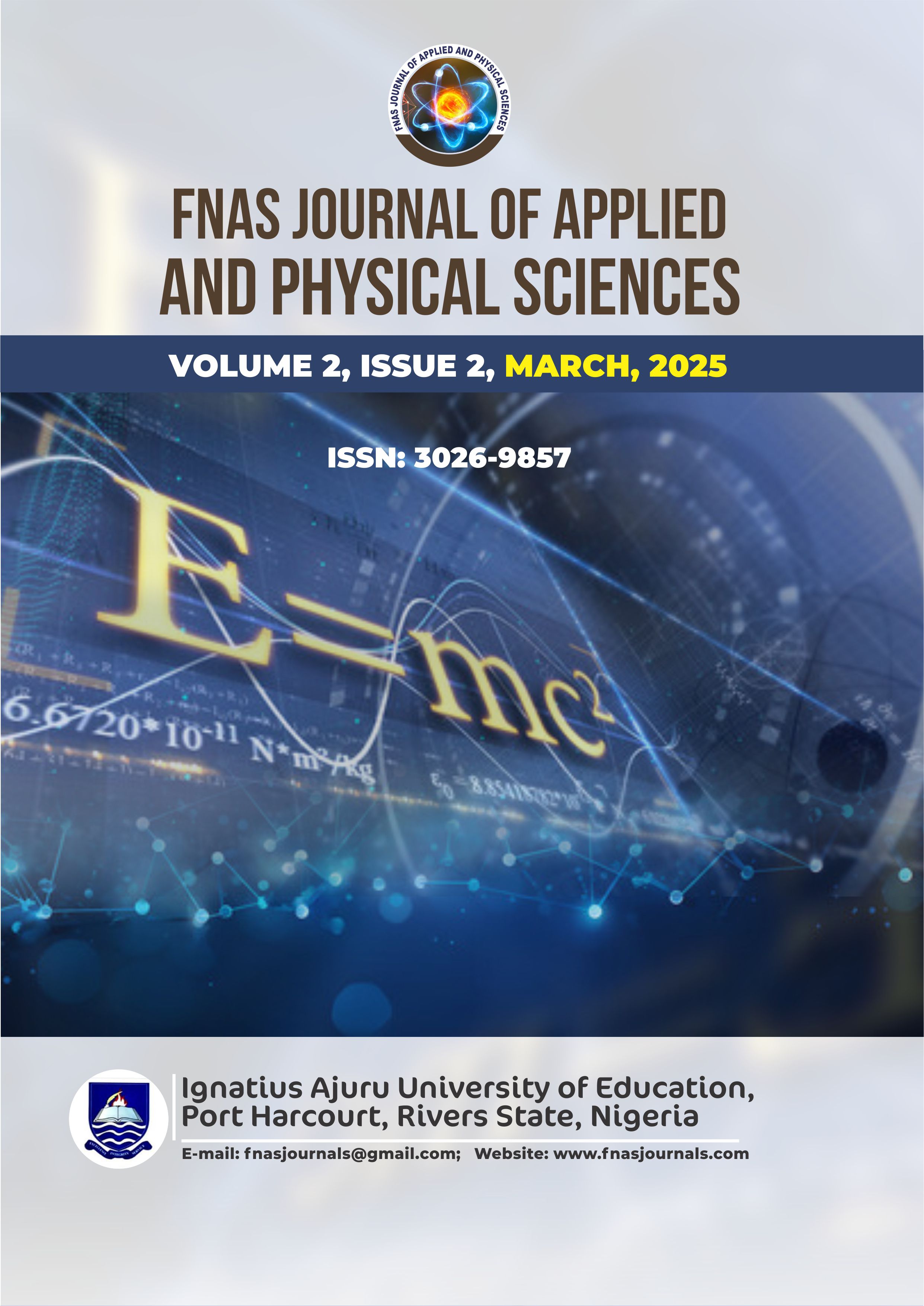Application of Integrated Geophysical Methods for Groundwater Exploration in Iworoko-Ekiti, Southwestern Nigeria
Keywords:
Basement Complex, Electromagnetic, Electrical Resistivity, Groundwater, Iworoko-EkitiAbstract
Electrical Resistivity and Electromagnetic Methods were adopted to probe the subsurface formation of the Isaba Garri processing Industry environment as a result of challenges experienced in groundwater production. The environment falls on a big outcrop of land where proximity of locating a position for a borehole has been difficult. The Impact method, Electromagnetic method using gradient array method and Three Vertical Electrical Soundings were established along a single 120 m traverse orientated in a north-south direction. The Electromagnetic approach served as a pre-study for the establishment of the VES. The EM and VES methods revealed different geologic formations which are; topsoil, weathered layer, fresh basement and fractured basement with resistivity range of 96 – 976, 1396 – 2380, 4546 – 28594 and 126 ohm-m, and thicknesses range of 1.2 – 2.9, 5.3 – 6.2, 4.1 to infinity and 10.7 m respectively. The result revealed that VES 1 located at the southern part of the study, is good enough for borehole drilling for the successful running of the Industry.
References
Akintorinwa, O. J. (2020). Geological mapping of the study area and its environs, focusing on groundwater potential and basement complex characteristics.
Carrard, N., Foster, T., & Willetts, J. (2019). Groundwater as a source of drinking water in Southeast Asia and the Pacific: A multi-country review of current reliance and resource concerns. Water, 11(8), 1605.
Cooray, P. G. (1972, 1975). Studies related to the geological characteristics of basement complexes in Nigeria.
Dao, P. U., Heuzard, A. G., Hoa Le, T. X., Zhao, J., Yin, R., Shang, C., & Fan, C. (2024). The impacts of climate change on groundwater quality: A review. Science of the Total Environment, 912, 169241.
Ejepu, J. S., Jimoh, M. O., Abdullahi, S., & Mba, M. A. (2022). Groundwater exploration using multi criteria decision analysis and analytic hierarchy process in Federal Capital Territory, Abuja, Central Nigeria. International Journal of Geosciences, 13(1).
Ishola, K. S., Fatoyinbo, A. A., Hamid-Mosaku, A. I., Okolie, C. J., Daramola, O. E., & Lawal, T. O. (2023). Groundwater potential mapping in hard rock terrain using remote sensing, geospatial and aeromagnetic data. Geosystems and Geoenvironment, 2(1), 100107.
Katsanou, K., & Karapanagioti, H. K. (2017). Surface water and groundwater sources for drinking water. Discover Research.
Li, P., Karunanidhi, D., Subramani, T., & Srinivasamoorthy, K. (2021). Sources and consequences of groundwater contamination. Archives of Environmental Contamination and Toxicology, 80(1), 1–10.
Olanrewaju, D. A. (1981, 1987). Research on geology and rock formations within the Nigerian basement complex.
Opoku, P. A., Shu, L., & Amoako-Nimako, G. K. (2024). Assessment of groundwater potential zones by integrating hydrogeological data, geographic information systems, remote sensing, and analytical hierarchical process techniques in the Jinan Karst Spring Basin of China. Water, 16(4), 566.
Rahaman, M. A. (1981). Studies on the formation of granite and charnockite rocks in Nigeria.
Scanlon, B. R., Fakhreddine, S., Ashraf, R., & Zheng, C. (2023). Global water resources and the role of groundwater in a resilient water future. Nature Reviews Earth & Environment, 4(2).
Stanly, R., Yasala, S., & Murugesan, R. V. (2021). Hydrological subsurface investigation using geophysical electrical and magnetic methods in and around Valliyar river basin, India. Results in Geophysical Sciences, 7, 100022.
Ubaidullah, A., Francis, A. A., & Francis, W. K. (2021). Assessment of groundwater potential using vertical electric sounding technique at Faculty of Medicine and Engineering, Federal University of Dustin-ma, Kastina State Nigeria. Global Journal of Earth and Environmental Science, 6(4), 79–80.





